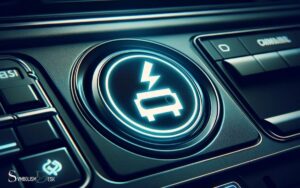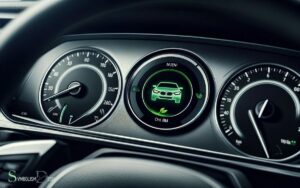Nissan Dashboard Symbols Two Cars: FCW!
The Nissan dashboard symbol depicting two cars, often with a star between them, indicates the vehicle’s Forward Collision Warning (FCW) system. This feature alerts the driver to potential collisions with the vehicle ahead.
The Forward Collision Warning system uses sensors to monitor the distance between your vehicle and the one in front of it.
If you approach another vehicle too quickly, the FCW system will trigger a visual and/or audible alert, symbolized by two cars with a star, to prompt you to take action.
This safety feature aims to reduce the chances of rear-ending the car in front of you by giving you earlier warning to slow down or stop.
For example, when driving a Nissan and the FCW system detects a potential collision:
Ensure your safety on the road by understanding your Nissan’s Forward Collision Warning system, symbolized by two cars on the dashboard.
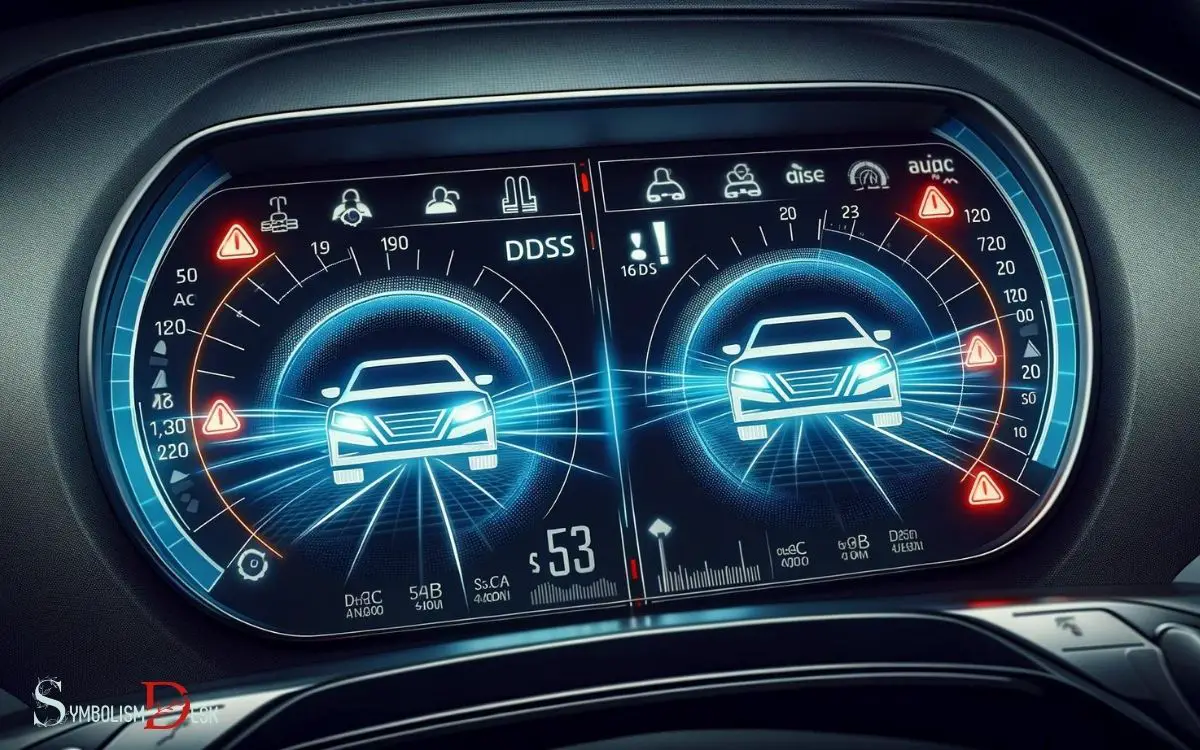
Key Takeaway
Nissan Altima Dashboard Symbols
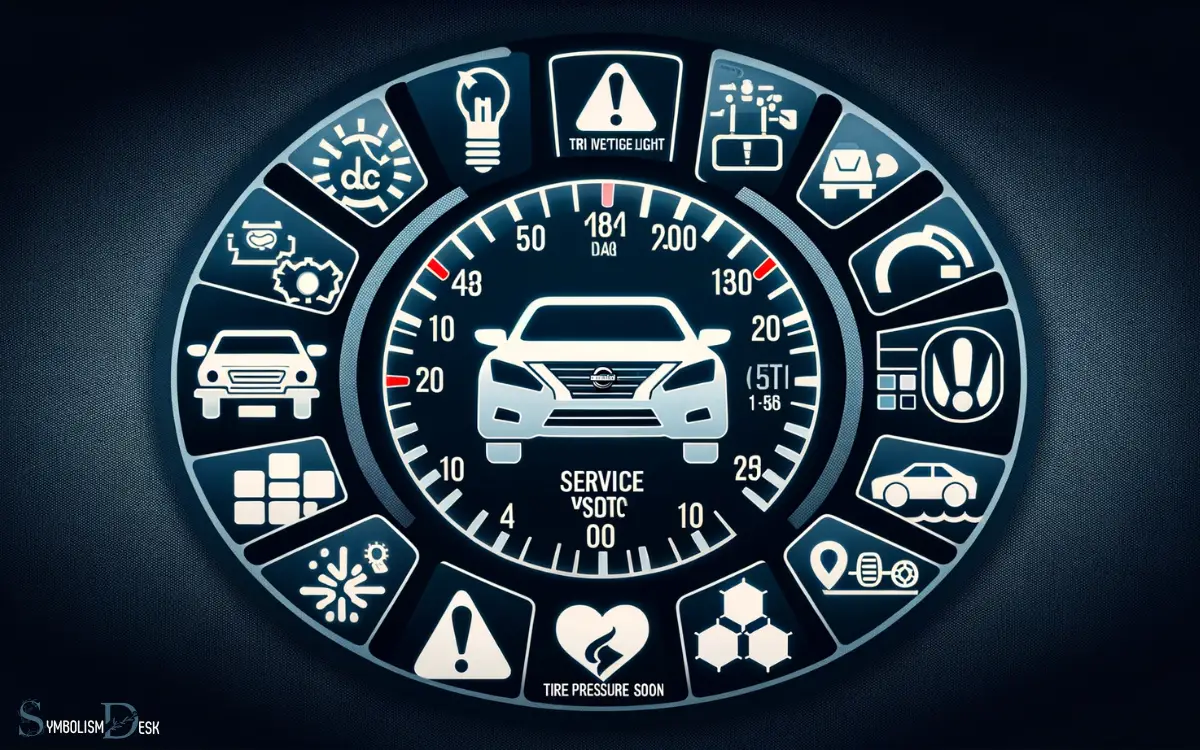
Nissan Altima dashboard symbols often indicate important vehicle information that drivers should be aware of while operating their cars.
These symbols can convey a range of messages, including maintenance alerts, system malfunctions, or simply operational status updates.
Some common symbols found on the Nissan Altima dashboard include the check engine light, oil pressure warning, tire pressure monitoring system, and the anti-lock braking system.
Understanding these symbols can help drivers take appropriate action to maintain their vehicle’s performance and safety. It’s essential for Altima owners to consult their vehicle’s manual to familiarize themselves with these symbols and their meanings.
Nissan Rogue Dashboard Symbols
The dashboard symbols on the Nissan Rogue convey important vehicle information for drivers to be aware of while operating their cars.
Understanding these symbols can help drivers stay informed about their vehicle’s status and potential issues.
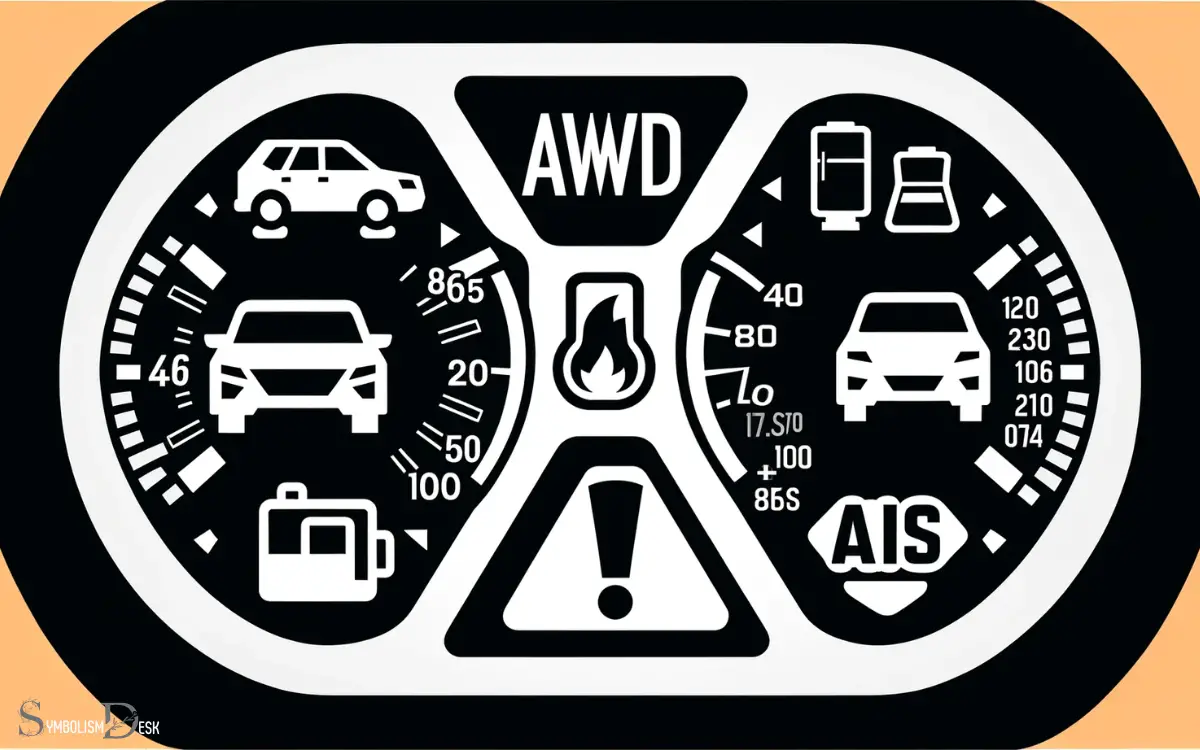
Here are four essential dashboard symbols commonly found in the Nissan Rogue:
- Engine Oil Pressure Warning: This symbol indicates low oil pressure, signaling the need to check the oil level and ensure proper lubrication.
- Tire Pressure Monitoring System (TPMS) Warning: This symbol alerts drivers to low tire pressure, prompting them to check and adjust tire pressures as needed for optimal safety and performance.
- Battery Alert: When illuminated, this symbol indicates a potential issue with the charging system or a weak battery that requires attention.
- Vehicle Dynamic Control (VDC) Off Indicator: This symbol lights up when the VDC system is turned off, typically due to driver intervention or system malfunction.
Understanding Common Dashboard Symbols
When driving a Nissan vehicle, understanding the common dashboard symbols is crucial for staying informed about the car’s status.
Decoding warning lights, recognizing the importance of symbols, and understanding maintenance reminders will help drivers stay on top of their vehicle’s needs and avoid potential issues.
These symbols provide valuable information that can help drivers maintain their Nissan vehicle in top condition.
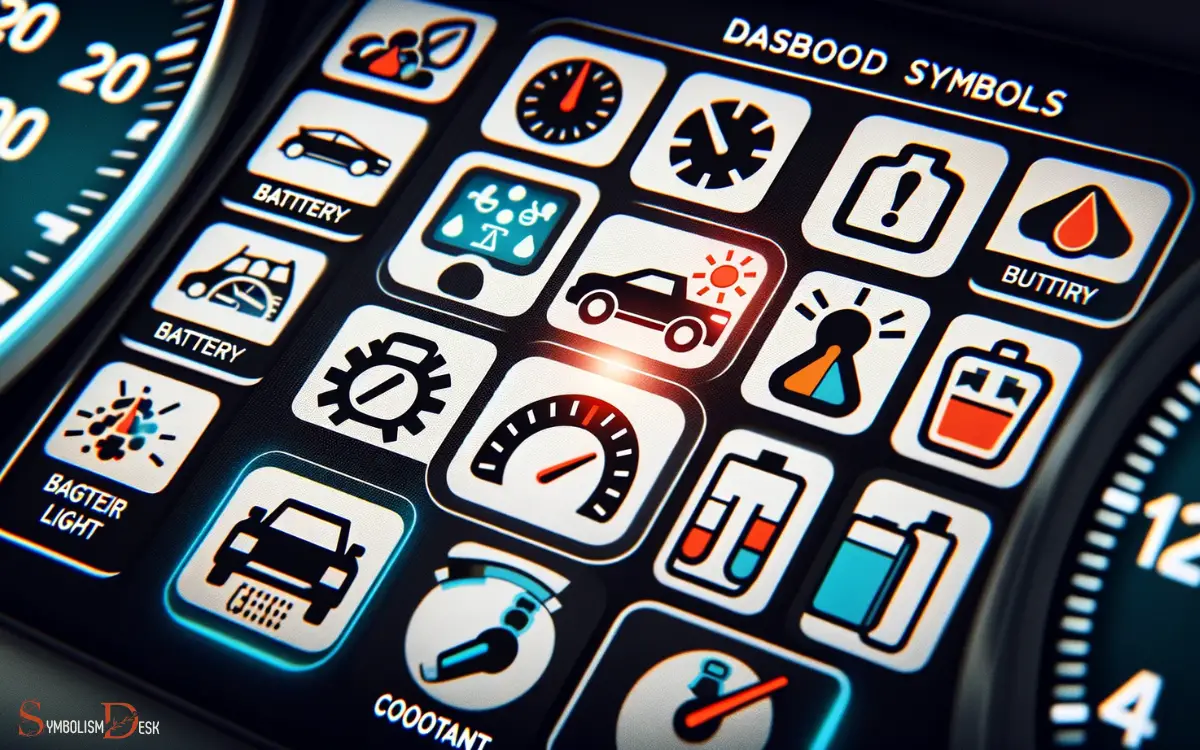
Decoding Warning Lights
Understanding common dashboard symbols can help drivers quickly identify potential issues with their vehicles. Decoding warning lights is essential for vehicle maintenance and safety.
Here are four common dashboard symbols and their meanings:
- Check Engine Light: This indicates an issue with the engine or emissions control system. It could be something minor or a more serious problem.
- Battery Warning Light: This light signals a problem with the charging system. It could indicate a faulty battery, alternator, or other electrical issues.
- Oil Pressure Warning Light: This light illuminates when the oil pressure is too low, signaling potential engine damage if not addressed promptly.
- Brake System Warning Light: This warns of issues with the braking system, such as low brake fluid or a malfunction in the system.
Understanding these symbols can aid drivers in taking necessary actions to address potential vehicle issues promptly.
Importance of Symbols
It is essential for drivers to recognize the importance of understanding common dashboard symbols, as this knowledge enables them to proactively address potential vehicle issues and ensure their safety on the road.
Dashboard symbols serve as a vehicle’s communication system, alerting the driver to various conditions such as low fuel, engine problems, or issues with the braking system.
Understanding these symbols empowers drivers to take prompt action, preventing potential breakdowns or accidents.
Moreover, being able to interpret dashboard symbols can help drivers make informed decisions about when to seek professional automotive assistance, potentially saving time and money in the long run.
Therefore, familiarity with common dashboard symbols is crucial for every driver to maintain their vehicle’s health and safety on the road.
Maintenance Reminders Explained
Drivers can benefit from understanding maintenance reminders and common dashboard symbols as they play a crucial role in vehicle upkeep and safety.
To ensure a clear understanding, here are four common maintenance reminders explained:
- Engine Oil: This symbol typically indicates that an oil change is due. It’s crucial to adhere to the recommended oil change schedule to maintain engine performance and longevity.
- Brake System: This symbol alerts drivers to issues with the braking system. Ignoring this warning could compromise safety, so prompt inspection and maintenance are necessary.
- Check Engine Light: This symbol can indicate a wide range of issues, from minor to severe. It’s essential to have the vehicle diagnosed to identify and address the underlying problem.
- Tire Pressure: This symbol signifies that tire pressure is outside the recommended range. Proper tire pressure is vital for safety, fuel efficiency, and tire longevity.
Engine and Powertrain Indicators
Frequently, drivers may encounter dashboard symbols related to the engine and powertrain, providing important information about the vehicle’s performance. These indicators are crucial for understanding the health and functionality of the engine and powertrain components.
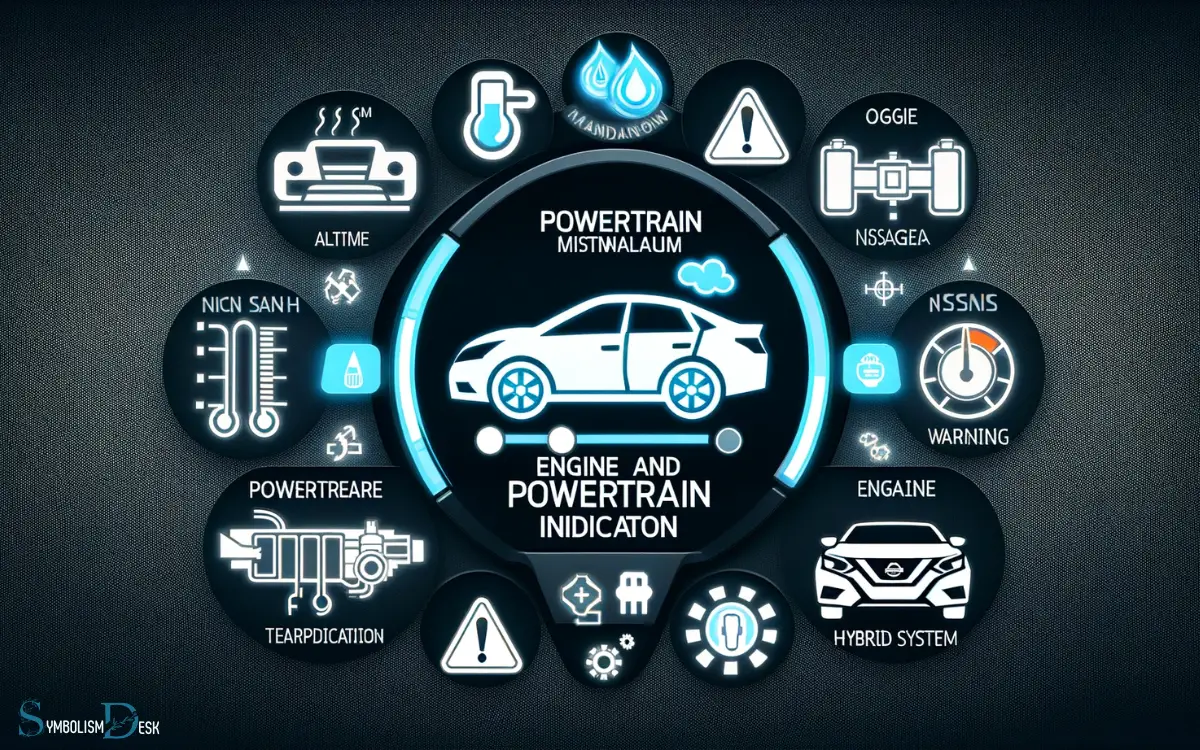
Below is a table summarizing some common engine and powertrain symbols and their meanings:
| Symbol | Meaning |
|---|---|
| Check Engine Light | Indicates an issue with the engine or emissions system |
| Battery Light | Warns of a problem with the charging system |
| Transmission Light | Signals a fault in the transmission system |
| Oil Pressure Light | Alerts to low oil pressure in the engine |
Drivers should never ignore these indicators and should promptly address any issues to ensure the vehicle continues to operate safely and efficiently.
Warning and Alert Symbols
The dashboard of Nissan vehicles displays warning and alert symbols that convey crucial information about potential issues or hazards. These symbols are designed to alert drivers to important situations that require attention.
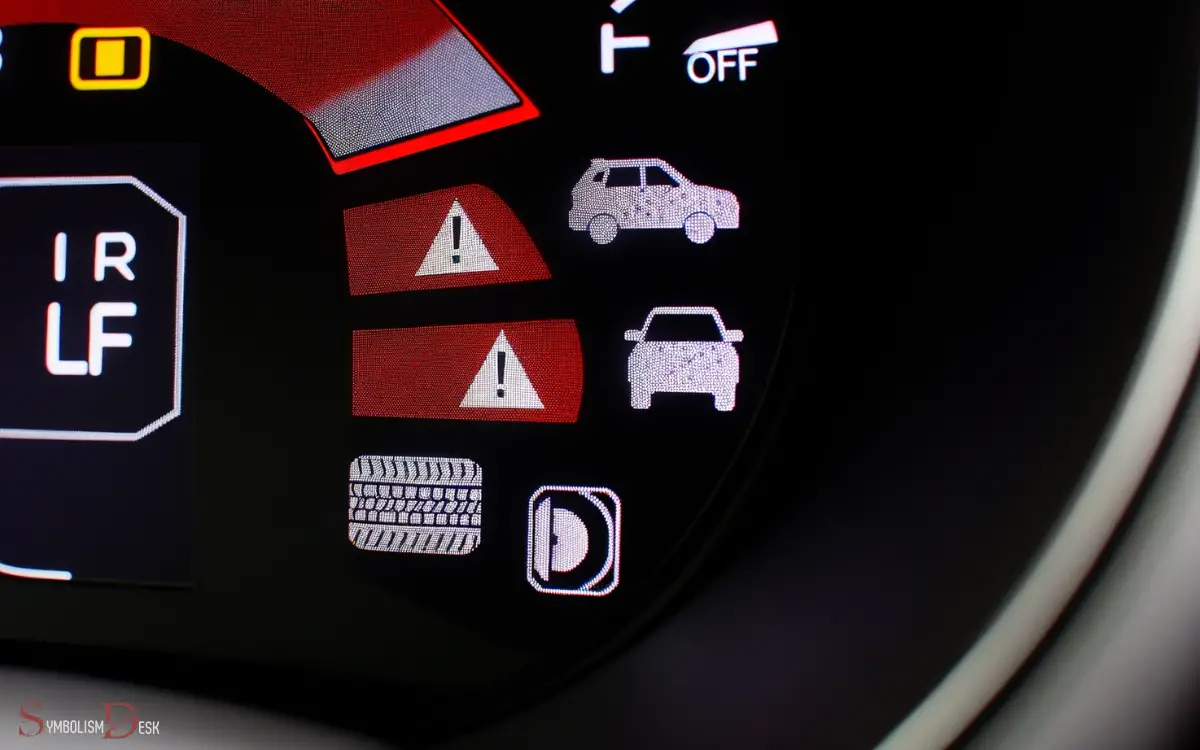
Here are four common warning and alert symbols that drivers should be aware of:
- Check Engine Light: This light indicates a potential issue with the engine or emissions system.
- Oil Pressure Warning: It illuminates when there is a drop in oil pressure, signaling a potential problem with lubrication.
- Battery Alert: This symbol indicates a malfunction in the vehicle’s charging system.
- Brake System Warning: It alerts drivers to potential issues with the brake system, such as low brake fluid or a malfunction.
Understanding these symbols can help drivers address potential problems promptly and ensure safe driving.
Safety and Security Icons
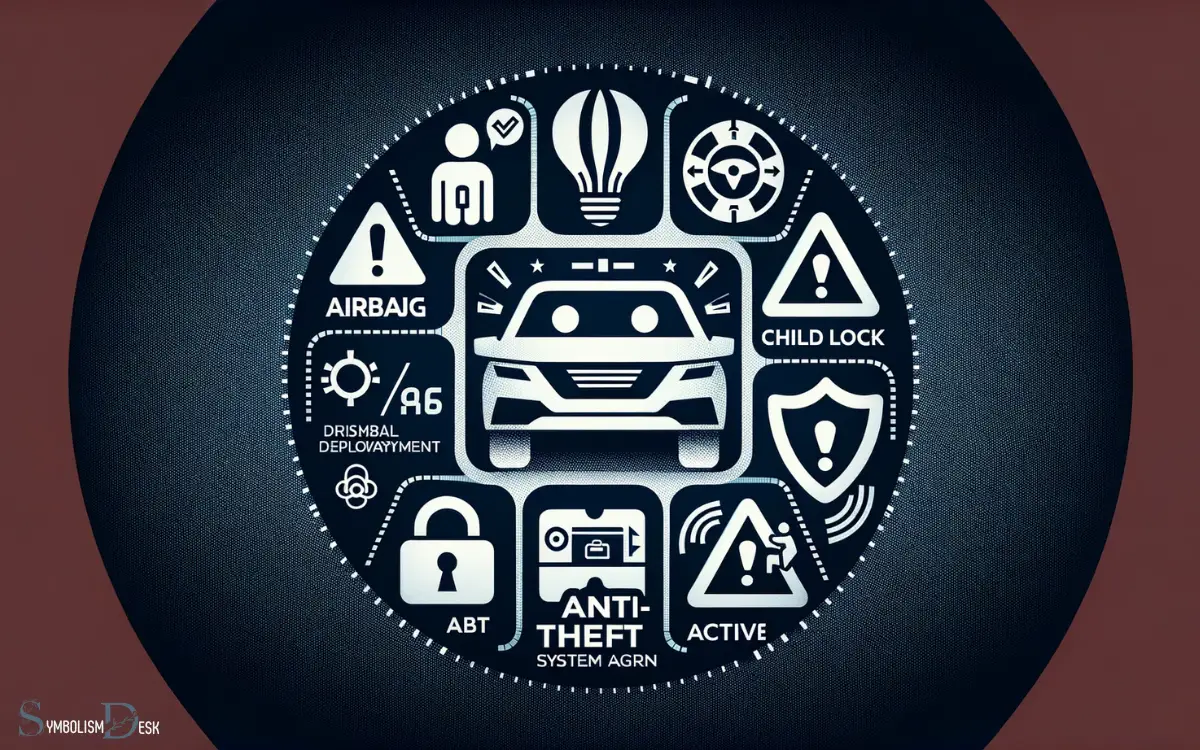
One of the most critical safety and security icons displayed on the Nissan dashboard is the airbag warning symbol. This icon illuminates when there’s an issue with the airbag system.
Another important safety symbol is the seatbelt reminder, which serves as a reminder for both the driver and passengers to buckle up.
The tire pressure monitoring system (TPMS) warning light is also vital as it indicates when the tire pressure is too low, helping to prevent potential blowouts or loss of control.
Additionally, the security system icon alerts drivers if there is an issue with the vehicle’s security system, such as a potential break-in or unauthorized entry.
Understanding these safety and security icons is crucial for maintaining a secure and protected driving experience.
Electrical System and Battery Alerts
When the battery warning light, alternator malfunction indicator, or electrical system fault warning appears on the dashboard, it’s crucial for drivers to take immediate action.
These alerts indicate potential issues with the electrical system or battery, which can affect the vehicle’s performance and safety.
Understanding these symbols and promptly addressing any concerns can help prevent more serious problems down the road.
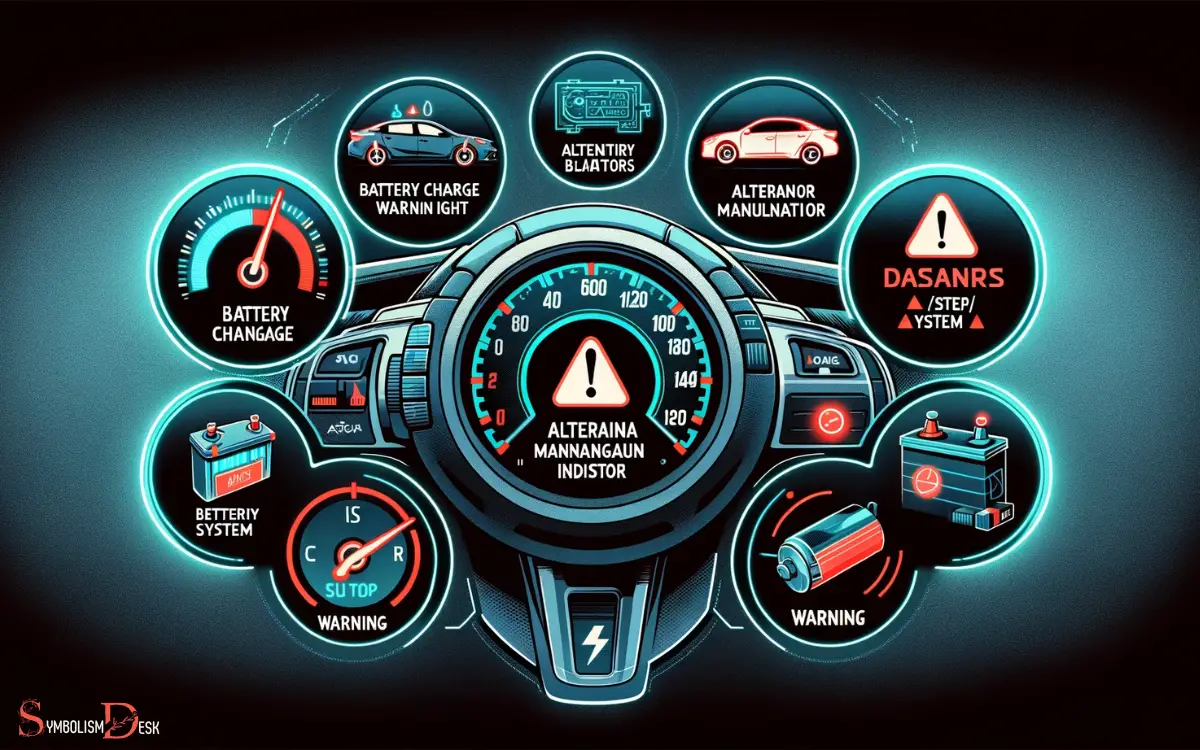
Battery Warning Light
An article determiner is not a specific word or phrase. Can you please provide more details or clarify what you are looking for?
- The battery warning light on the dashboard indicates issues with the electrical system or the battery itself.
- It may come on due to a faulty battery, alternator, or charging system.
- If the light comes on while driving, it’s essential to have the vehicle inspected by a professional as soon as possible.
- Ignoring the battery warning light can lead to stalling, and ultimately, the vehicle may not start.
The battery warning light is a crucial indicator of potential electrical system or battery problems, and prompt attention is necessary to prevent further issues.
Alternator Malfunction Indicator
The alternator malfunction indicator on the Nissan dashboard signals potential issues with the electrical system or battery. It typically looks like a battery with a positive and negative sign on each side.
When this light illuminates while driving, it indicates that the vehicle’s electrical system is not receiving sufficient power. This could mean that the alternator is failing to charge the battery, or there may be a problem with the battery itself.
If this light comes on, it’s important to address the issue promptly to avoid unexpected breakdowns. A malfunctioning alternator can cause the vehicle to lose power and eventually stall.
Therefore, it’s advisable to have the electrical system and battery checked by a qualified mechanic as soon as possible.
Electrical System Fault
The electrical system fault indicator on the Nissan dashboard alerts drivers to potential issues with the vehicle’s battery or overall electrical system. If this light illuminates, it’s essential to address the underlying problem promptly to avoid potential breakdowns or malfunctions.
Here are some common reasons for this alert:
- Battery Malfunction: The indicator may signal a failing battery, which could lead to starting difficulties.
- Charging System Problem: It could indicate issues with the alternator or the charging system, affecting the battery’s ability to recharge.
- Faulty Wiring: Problems in the electrical wiring or connections might trigger the alert, causing erratic electrical behavior.
- Sensor Issues: Faulty sensors may erroneously trigger the electrical system fault indicator, necessitating a diagnostic check.
Fluids and Maintenance Notifications
Fluids and maintenance notifications in Nissan vehicles often prompt drivers to take action for optimal vehicle performance. It’s important for drivers to understand these symbols and respond accordingly.
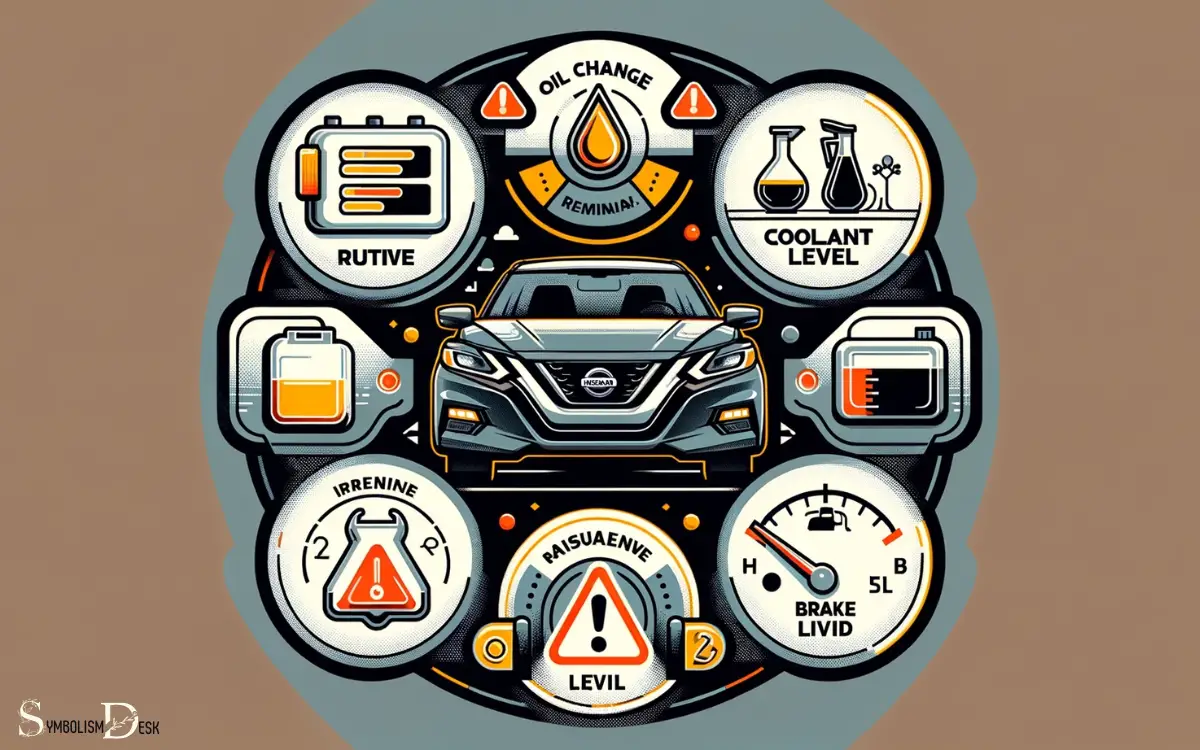
The following table outlines some common fluid and maintenance notifications in Nissan vehicles:
| Symbol | Meaning | Action Required |
|---|---|---|
| Oil Change Reminder | Indicates the need for an oil change | Schedule an oil change |
| Washer Fluid Level | Indicates low washer fluid level | Refill washer fluid |
| Brake Fluid | Indicates low brake fluid level | Check brake system and fluid level |
| Maintenance Required | Indicates a scheduled maintenance | Schedule a maintenance appointment |
Understanding these symbols and taking appropriate action can help ensure the longevity and performance of the vehicle.
Conclusion
As drivers, it’s important to understand the dashboard symbols in our Nissan vehicles. These symbols serve as important indicators of our car’s health and safety. One of the most important dashboard symbols to be aware of is the downhill car symbol, which indicates when the vehicle is using hill descent control. This can be especially helpful when driving in hilly or mountainous terrain, as it helps to maintain a safe speed while going downhill. Understanding these symbols can help us make informed decisions while on the road and ensure the proper functioning of our Nissan vehicles.
By familiarizing ourselves with these symbols, we can ensure that our cars are running smoothly and safely on the road.
So next time you see a symbol light up on your dashboard, you’ll be equipped with the knowledge to address it and keep your Nissan running like a dream.


